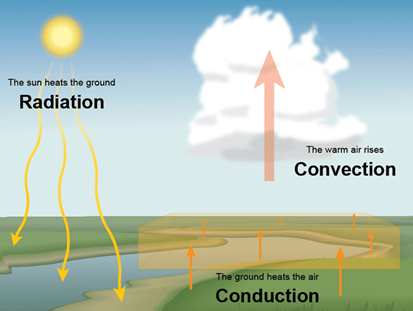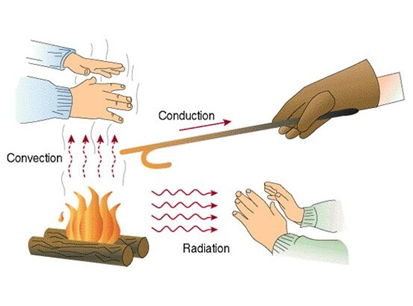Fire Engineering: Heat and its consequences during Fire
- Danilo Macedo
- Apr 18, 2023
- 3 min read
Updated: Jan 14
Heat exposure is one of the tenability criteria assessed during a fire design, given the many adverse affects it can have on the human body. One of the best ways to prevent exposing building occupants to heat during a fire is by having fire separations and safe paths in your building.
Principles of Heat Transfer
Heat transfer is the science of transport, exchange, and redistribution of thermal energy. Heat can be transferred in three main ways: conduction, convection, and radiation. Heat can also be directly applied via direct burning and transported through embers or 'flying brands'.
Conduction: Heat is transferred through solid objects due to molecular energy transfer. Denser material conducts heat better, with metal being a good conductor and wood a poor conductor.
For example, in passive fire design we consider heat conducted through metal pipes, cables or steel beams and therefore spreading from one fire cell to the other.
Convection: Heat transfer from a moving fluid (gas or liquid) to a solid surface
Examples:
Air currents carry hot gases up stairwells and lift shafts heating wall and ceiling surfaces.
A fan on a hot day transfers the heat of your body to the air.
Radiation: Is the heat transfer due to the emission of electromagnetic waves in a straight line. The heat waves travel in all directions away from the heat source, until they are absorbed.
Examples:
Sun energy coming to Earth.
Sun’s rays concentrated by a broken glass may ignite dry grass.
Direct Burning: Heat transfer through a flame physically touching a combustible material.
Examples:
Lighting a candle with a match
A curtain catching on fire from a candle placed too closed to it.

Ember Transport: The movement of hot ash or embers, either carried by wind (sometimes called 'flying brands') or by rolling downhill, could also spread the fire.
Examples:
Lighting a barbecue may release an ember into the air, which may start a fire elsewhere.
The wind blows bush fire embers over a fire break

Effects of Heat
During a fire situation, a person may be exposed to high levels of heat. The human body feels comfortable in temperatures between 20-27°C with an upper tolerance limit between 35-40°C. To maintain a normal body temperature when exposed to heat, the human body will react by increasing the heart rate and sweating. Being exposed to excessive heat can alos reduce the ability to do physical and mental work.
Possible effects from exposure to excessive heat include:
Skin Burns – The sensation of pain is followed soon afterwards by burns, causing severe injury, incapacitation, or death.
Heat oedema - Swelling is often most noticeable in the ankles. Recovery occurs after a day or two in a cool environment.
Heat-induced giddiness – results from reduced blood flow to the brain. Heat causes an increase in blood flow to the skin and the pooling of blood in the legs, which can lead to a sudden drop in blood pressure.
Heat exhaustion – Is caused by loss of body fluids through sweating and lower blood pressure due to the pooling of blood in the legs. It is induced by standing due to a temporarily insufficient flow of blood to the brain.
Heat Stroke (Hyperthermia) – Gradual increase in the body core temperature, which can lead to consciousness becoming blurred and the subject becoming seriously ill or even fatal.
Hyperpyrexia – A very high fever or a body temperature of more than 106.7°F or 41.5°C. Requires immediate first aid and medical attention as delayed treatment can result in damage to the brain, kidneys and heart. Treatment includes spraying cold water onto the body, fanning, and water immersion. Immersion needs to be done under medical supervision.
Thermal Damage to Respiratory Tract - Severe burns to the entire respiratory tract down to the deep lung due to its higher thermal capacity and the latent heat released during condensation.
Heat cramps – Muscle pains may occur or be combined with other heat or stress disorders. It is caused by the failure of the body to replace salt lost by sweating.
At Nelligan, we have the expertise to help with the specification and detailing of Fire separations on your Fire Safety Design, including Fire Engineering solutions and Passive Fire Protection systems.




Bình luận